Delhi Monuments Ticket Price, Timings, history and Facts
“Unlock the Secrets of Delhi’s Monuments: Discover Fascinating History, Ticket Prices, Timings, and Intriguing Facts!”
Immerse yourself in the rich tapestry of Delhi’s monumental heritage as we unveil the captivating history, exclusive insights, and essential information you need to explore these architectural marvels. Unearth hidden gems, with details on ticket prices, opening timings, and intriguing facts that will make your visit truly unforgettable. Don’t miss the chance to embark on an unforgettable journey through time and culture.
Delhi, the bustling capital of India, is a city where the past and present coexist in harmony. It’s a place where history unfolds with every step you take, and nowhere is this more evident than in its monumental legacy. Delhi’s architectural wonders tell a tale of empires, dynasties, and revolutions, making it a captivating destination for travelers and history enthusiasts alike. In this journey through Delhi’s monumental heritage, we’ll explore the stories behind some of the city’s most iconic landmarks.
Red Fort: A Symbol of India’s Freedom
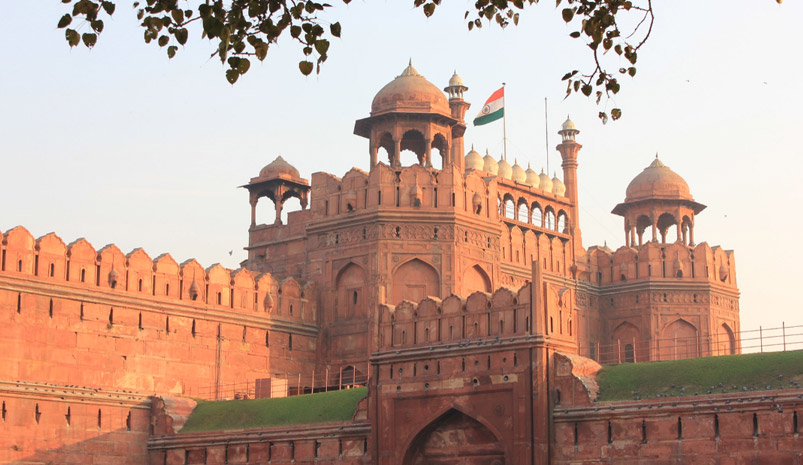
The Red Fort, or “Lal Qila,” is an architectural masterpiece and an enduring symbol of India’s struggle for independence. Built by the Mughal Emperor Shah Jahan in the 17th century, this grand fort is a magnificent blend of Persian, Timurid, and Indian architectural styles. The fort’s red sandstone walls, adorned with intricate white marble inlays, are a testament to the opulence and grandeur of the Mughal era.
But it’s not just the architectural beauty that makes the Red Fort so significant. On August 15, 1947, the Indian tricolor was unfurled here for the first time, marking the end of British colonial rule and India’s independence. As you walk through the fort’s sprawling complex, you can almost hear the echoes of history, making it a must-visit destination for those wanting to connect with India’s freedom struggle.
Red Fort Timings and Ticket Prices
- Timings: The Red Fort is usually open from 9:30 AM to 4:30 PM. It’s closed on Mondays.
- Ticket Prices: The entry fee for Indian citizens is around INR 35, while foreign tourists are charged around INR 500. There might be additional charges for entering the fort’s main buildings
Qutub Minar: Ancient Marvel Touching the Sky
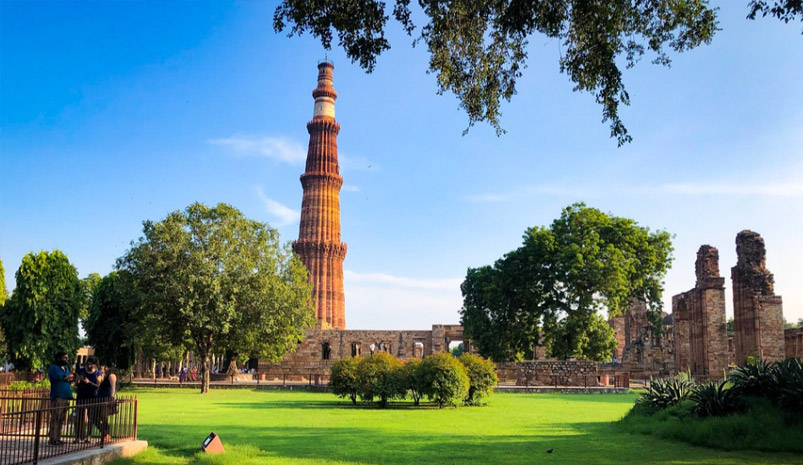
The Qutub Minar, a UNESCO World Heritage Site, stands tall in the heart of Delhi, captivating visitors with its awe-inspiring height and intricate design. This towering masterpiece was built in the 12th century by Qutb-ud-din Aibak, the founder of the Delhi Sultanate. Standing at a height of 73 meters, the Qutub Minar is a testament to the architectural and engineering prowess of that era.
The minaret’s five stories are decorated with exquisite Arabic calligraphy and geometric patterns. What makes the Qutub Minar even more remarkable is its construction using red sandstone and marble, showcasing the Indo-Islamic architectural style. The Qutub Minar is not just a marvel of the past; it’s a touchstone connecting us with Delhi’s rich history and the grandeur of the Delhi Sultanate.
Qutub Minar Timings and Ticket Prices
- Timings: Qutub Minar is generally open from 7:00 AM to 5:00 PM, with the last entry at 4:30 PM.
- Ticket Prices: The entry fee for Indian citizens is fee INR 40, while foreign tourists are charged INR 600. There might be concessions for students and children.
Jama Masjid: The Enigmatic Twins
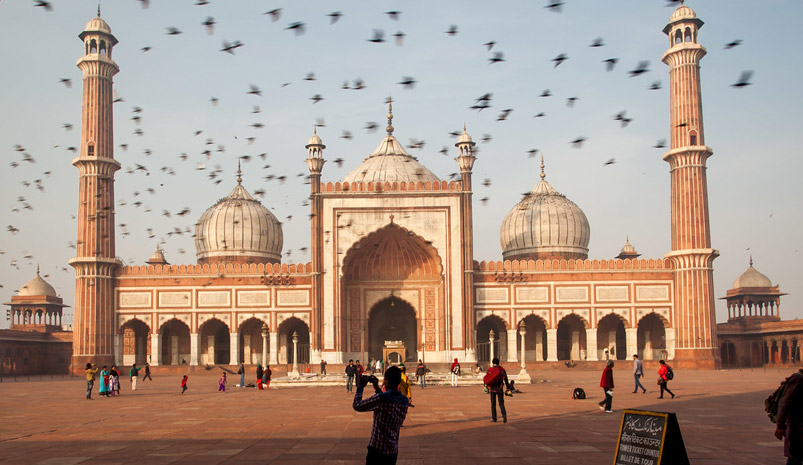
Located in the heart of Old Delhi, the Jama Masjid, or “Friday Mosque,” is an architectural gem that stands as a symbol of India’s diverse cultural heritage. Commissioned by Emperor Shah Jahan and completed in 1656, this grand mosque is one of the largest in India and can accommodate thousands of worshippers in its courtyard.
One of the most fascinating aspects of the Jama Masjid is its striking resemblance to the Red Fort, which is not surprising since both were constructed by Shah Jahan. The two structures share the same red sandstone and white marble architectural style, creating a sense of harmony and unity between them. The Jama Masjid is not only a place of worship but also a testament to the artistic and architectural brilliance of the Mughal era.
Jama Masjid Timings and Ticket Prices
- Timings: The Jama Masjid is open from sunrise to sunset, and it’s advisable to visit during prayer hours for a more authentic experience.
- Ticket Prices: Entry to the Jama Masjid is usually free, but there may be a small fee if you wish to use a camera.
India Gate: The Memorial of Sacrifice

The India Gate is not merely a war memorial; it’s a poignant tribute to the valor and sacrifice of Indian soldiers. Designed by Sir Edwin Lutyens, the arch-shaped monument is located in the heart of New Delhi and serves as a remembrance of the soldiers who laid down their lives during World War I. The names of over 13,000 servicemen are inscribed on the monument’s surface.
Visiting the India Gate is a solemn experience, as it stands as a reminder of the sacrifices made for the nation. The Amar Jawan Jyoti, an eternal flame, burns in memory of the soldiers, making it a place of reverence and reflection.
India Gate Timings and Ticket Prices
- Timings: India Gate is open to the public 24 hours a day, making it accessible for visits at any time.
- Ticket Prices: Entry to India Gate is free No of charge.
Humayun’s Tomb: A Glimpse into Mughal Architecture
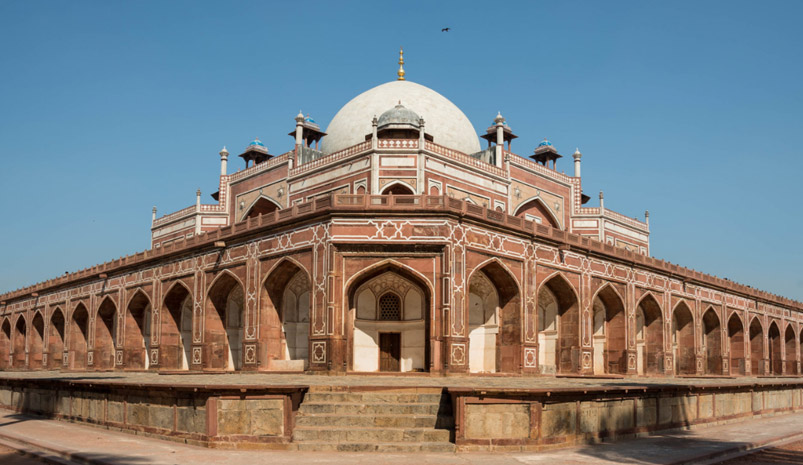
If you’ve ever wondered what architectural marvels the Mughals were capable of, a visit to Humayun’s Tomb will leave you in awe. This tomb, built in the mid-16th century, is the final resting place of Emperor Humayun. The tomb’s design is credited to Mirak Mirza Ghiyas, a Persian architect, and it stands as an early example of the garden tomb style that later influenced the design of the iconic Taj Mahal.
The intricate use of red sandstone and white marble in the construction of Humayun’s Tomb creates a striking visual contrast. The meticulously planned gardens and water channels surrounding the tomb add to its allure, making it a serene oasis in the bustling city. As you explore the tomb and its lush gardens, you’ll gain a deeper appreciation of Mughal architecture and the exquisite craftsmanship of that era.
Humayun’s Tomb Timings and Ticket Prices
- Timings: Humayun’s Tomb is generally open from sunrise to sunset, providing flexibility for visitors.
- Ticket Prices: The entry fee for Indian citizens is around INR 40, while foreign tourists are charged approximately INR 600. There may be concessions for students and children.
Lotus Temple: A Unique Blend of Spirituality and Innovation
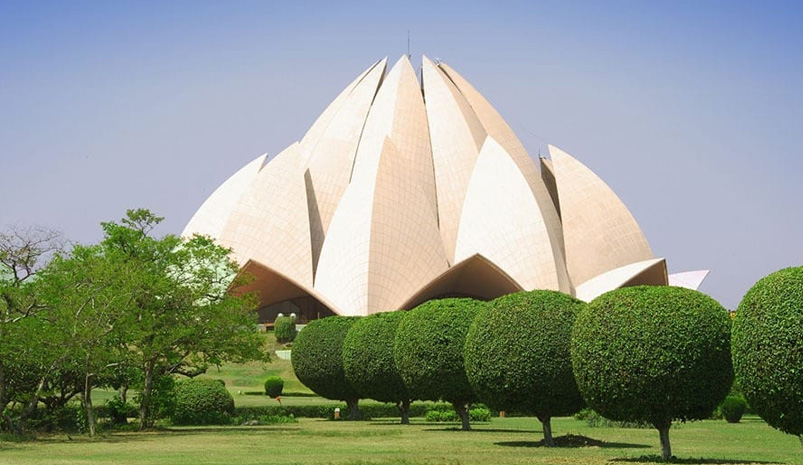
Delhi’s architectural wonders aren’t limited to historical relics; they also extend to modern marvels. The Lotus Temple, also known as the Bahá’í House of Worship, is a testament to contemporary architectural innovation. Shaped like a lotus flower in full bloom, this temple stands as a symbol of purity, peace, and unity.
What sets the Lotus Temple apart is not just its distinctive lotus shape but also its approach to spirituality. It’s open to people of all faiths and beliefs, offering a place of silent meditation and reflection. The temple’s design seamlessly blends the spiritual with the innovative, incorporating sustainable and eco-friendly elements. It’s a haven for those seeking tranquility and architectural inspiration in the heart of Delhi.
Lotus Temple Timings and Ticket Prices
- Timings: The Lotus Temple typically operates from 9:00 AM to 7:00 PM (April to September) and from 9:30 AM to 5:30 PM (October to March). It’s closed on Mondays.
- Ticket Prices: Entry to the Lotus Temple is free of charge, but donations are welcome.
Akshardham Temple: A Modern Architectural Wonder
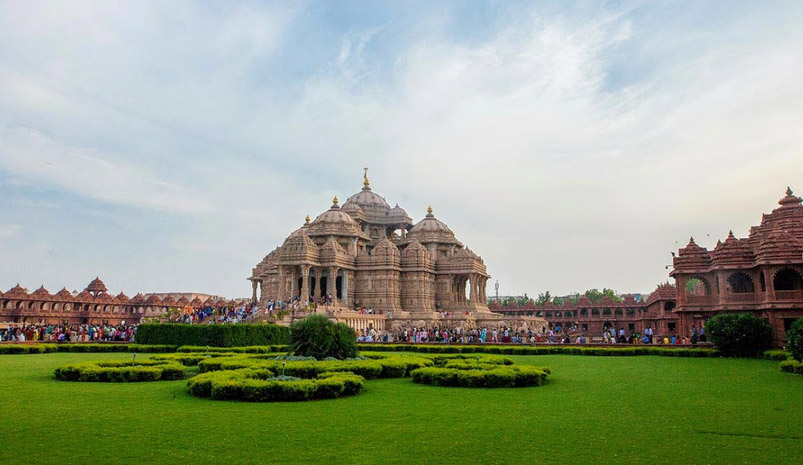
The Akshardham Temple is a modern architectural masterpiece that marries traditional Indian craftsmanship with cutting-edge technology. Located on the banks of the Yamuna River, this temple complex is dedicated to Bhagwan Swaminarayan and showcases an array of architectural and artistic wonders.
One of the most striking features is the intricately carved stone facade of the temple, which boasts detailed craftsmanship that tells stories from Indian mythology. The complex also houses a mesmerizing musical fountain and an exhibition that delves into the history and values of the Swaminarayan tradition. The Akshardham Temple is not only a place of worship but also a testament to India’s rich cultural heritage and architectural ingenuity.
Akshardham Temple Timings and Ticket Prices
- Timings: Akshardham Temple is generally open from 9:30 AM to 8:00 PM (last entry at 6:30 PM). It’s closed on Mondays.
- Ticket Prices: While entry to the temple premises is free, there may be charges for certain exhibitions and attractions within the complex.
Gandhi Smriti: A Place of Remembrance and Reflection
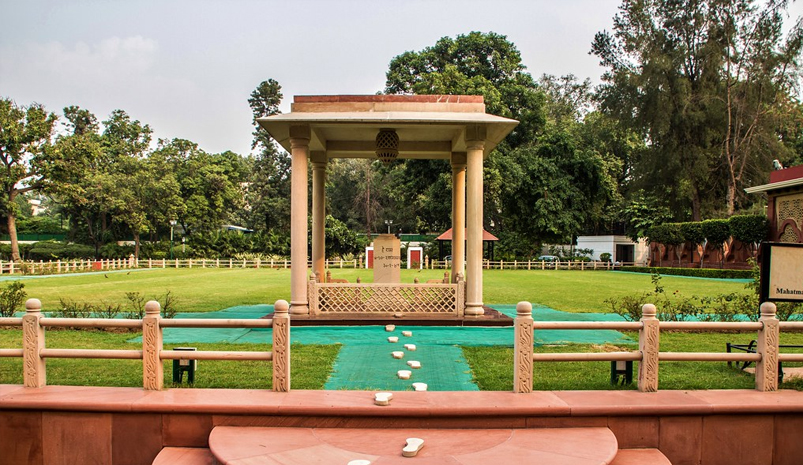
Gandhi Smriti, formerly known as Birla House, is a site of deep historical significance in Delhi. It’s where Mahatma Gandhi, the Father of the Nation, spent the last 144 days of his life before his tragic assassination on January 30, 1948. The house has been preserved as a memorial and museum, offering a poignant journey through the life, principles, and legacy of Mahatma Gandhi.
A visit to Gandhi Smriti is a chance to walk in the footsteps of the great leader, as you explore the room where he stayed and the prayer ground where he conducted his evening prayers. The museum houses a collection of photographs, artifacts, and exhibits that provide insight into Gandhi’s philosophy and his role in India’s freedom struggle.
Gandhi Smriti Timings and Ticket Prices
- Timings: Gandhi Smriti is open from 10:00 AM to 5:00 PM, except on Mondays.
- Ticket Prices: The entry fee for Gandhi Smriti is typically around INR 5 for Indian citizens and INR 25 for foreign tourists.
Fascinating Facts About Delhi’s Monuments
Delhi’s monuments are not just bricks and mortar; they are repositories of fascinating stories and historical tidbits:
- Red Fort’s Lahore Gate once housed the famous Peacock Throne, adorned with the Koh-i-Noor diamond.
- The Qutub Minar is believed to have been constructed using materials from the demolition of 27 Hindu temples.
- The India Gate was originally known as the All India War Memorial.
- Humayun’s Tomb is not only the final resting place of Emperor Humayun but also several other Mughal emperors.
- The Lotus Temple has garnered numerous architectural awards for its unique design and sustainable features.
- The Akshardham Temple was constructed without using steel and is entirely earthquake-resistant.
- Gandhi Smriti marks the exact spot where Mahatma Gandhi was assassinated, and the room has been preserved as it was on that fateful day.
- The Jamali Kamali Mosque gets its name from the two mysterious figures buried within, with stories shrouded in secrecy.
Conclusion: A Journey Worth Taking
Delhi’s monumental legacy is a testament to the city’s rich history and cultural diversity. From the Mughal opulence of the Red Fort and Humayun’s Tomb to the modern architectural wonders like the Lotus Temple and Akshardham, Delhi offers a delightful blend of the old and the new. Each monument is a chapter in India’s historical narrative, a piece of art, and a repository of stories waiting to be discovered.
So, whether you are a history buff, an architecture enthusiast, or simply someone looking to soak in the beauty and history of India’s capital city, Delhi’s monuments offer a journey worth taking. It’s a voyage through time, a chance to connect with the spirit of India’s freedom struggle, and an opportunity to marvel at the artistic and architectural prowess that has left an indelible mark on the cityscape.
FAQs: Your Queries Answered
Q. What is the best time to visit Delhi’s monuments?
The best time to visit Delhi’s monuments is during the cooler months, from October to March. The weather is more pleasant, making it ideal for exploring outdoor attractions. However, do keep in mind that this is the peak tourist season, and some sites may be crowded.
Q. Are there any restrictions or dress codes at these monuments?
While there are no strict dress codes, it’s advisable to dress modestly, especially when visiting religious sites. Carrying a valid photo ID is often required for entry, so be sure to carry one with you.
Q. Can I hire a guide for these monuments?
Yes, you can hire guides at most of the monuments. They offer valuable insights into the history, architecture, and cultural significance of these sites.
Q. Are these monuments accessible for people with disabilities?
Many of Delhi’s monuments have made efforts to be accessible to people with disabilities, with the installation of ramps and other facilities. However, it’s a good idea to check the specific accessibility options for each monument before your visit.
Q. Can I take photographs at these monuments?
Photography policies vary from monument to monument. In general, photography for personal use is allowed, but some sites may charge an additional fee for professional photography or restrict it in certain areas.
Q. Are there any nearby attractions to explore in Delhi?
Delhi is a treasure trove of attractions. In addition to the monuments, you can explore museums, markets, and historical sites, and savor the city’s diverse cuisine.
Q. How can I reach these monuments in Delhi?
Most of Delhi’s monuments are well connected by road and public transportation. You can hire a taxi, use the Delhi Metro, or take advantage of public buses to reach these attractions. Many of them are also easily accessible by foot if you’re exploring a particular area.
Q. Can I buy souvenirs at these monuments?
Yes, most monuments have souvenir shops where you can purchase mementos of your visit, including postcards, books, and traditional Indian handicrafts. These souvenirs are a wonderful way to take a piece of Delhi’s monumental legacy home with you
